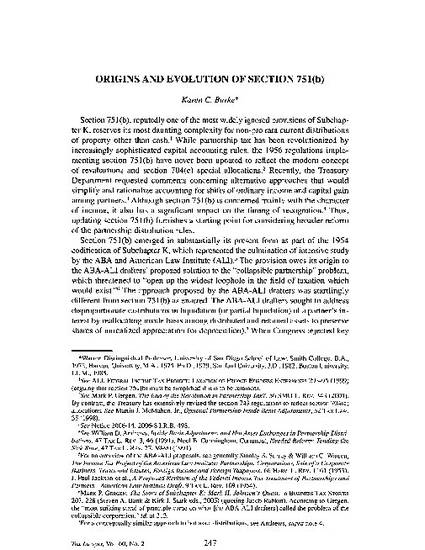
Section 751(b), reputedly one of the most widely ignored provisions of Subchapter K of the Internal Revenue Code, reserves its most daunting complexity for nonprorata current distributions of property other than cash. While partnership tax has been revolutionized by increasingly sophisticated capital-accounting rules, the 1956 regulations implementing section 751(b) have never been updated to reflect the modern concept of revaluations and section 704(c) special allocations. Recently, the Treasury Department has requested comments concerning alternative approaches that would simplify and rationalize accounting for shifts of ordinary income and capital gain among partners.
This article considers proposals to replace the imputed exchange mechanism under the current section 751(b) regulations with a simple hot asset sale approach, coupled with a revaluation of partnership property and reverse section 704(c) allocations. It examines the evolution of the collapsible partnership rules as part of the larger process of enacting the 1954 Code, and traces the flaws of the current provision to the Congress' failure to focus on disproportionate current distributions. While Subchapter K has yet to achieve coherent treatment of disproportionate distributions, reexamining section 751(b)'s origin and evolution offers fresh insights concerning the proper scope of the nonrecognition rules.
